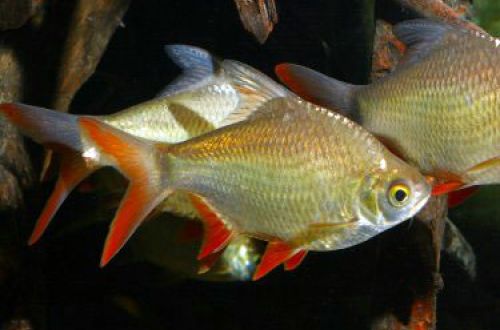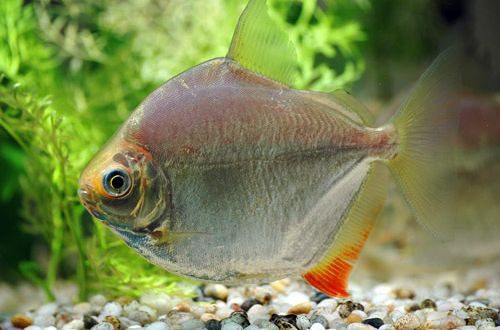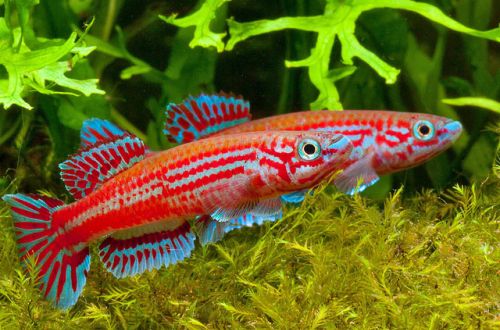
Notobranch Korthaus
Nothobranch Korthausae, scientific name Nothobranchius korthausae, belongs to the Cyprinodontiformes family. It does not differ in original coloring, but in general it looks very nice. It has complex intraspecific relationships between males, but at the same time it is easy to keep and breed. With some reservations, it can be recommended to beginner aquarists.

Habitat
A native of the African continent, more precisely from one of the islands off the coast of Tanzania. The island has an unusual name Mafia (Mafia Islands). It lives in numerous small lakes and reservoirs with stagnant water.
Description
An elongated body with far-set rounded fins and a small pointed head. The coloration is red-brown with rows of turquoise dots. There are several color variations within the species, with yellow predominating over red. Females are noticeably more modestly colored, have paler shades.
Food
It is recommended to feed live food from small crustaceans (daphnia), bloodworms, small worms. If this is not possible, live or frozen food should be combined with dry food (flakes, granules) from well-known manufacturers, which should contain protein products. It is undesirable to serve exclusively dry food, this will inevitably lead to digestive problems.
Feed 2-3 times a day in the amount eaten in a few minutes, leftover food should be removed to avoid contamination of the water in the aquarium.
Maintenance and care
A couple of fish will feel quite comfortable in a tank of 40 liters or more, for a larger number of inhabitants the appropriate size is selected. Aquarium composition should be built around two main components – floating plants and soft substrate. Plants can cover most of the surface of the water, leaving some free space. The soil is preferably sandy mixed with peat. The remaining elements of the underwater interior are selected to taste.
Notobranch Courthouse lives in soft acidic water, the parameters of which can vary within the same limits (i.e. be more or less acidic, more or less soft), but you should not go beyond. More convenient about the water parameters (pH and dGH) and how to change them in the section “Hydrochemical composition of water”.
The minimum set of equipment includes a heater, an aerator, a lighting system and a filter, where it is recommended to use peat-based materials as a filter material, this contributes to water acidification.
Weekly maintenance of the aquarium consists in replacing part of the water (10–20%) with fresh water. As necessary, clean the soil from organic waste (excrement, uneaten food residues) and clean the glass of the tank.
Behavior
Relatively calm and peaceful fish, friendly to other species. Intraspecific relationships are noticeably more complex. Males tend to conflict with each other, arranging violent fights, with a shortage of females and free space. Equilibrium occurs when there are at least 2 females per male and the territory is comparable to the volume of an aquarium of 40 liters.
Breeding / breeding
Breeding Notobranch Korthaus does not require special preparations. They successfully spawn even in an empty aquarium directly on the glass, however, it is desirable to create the proper conditions for them. Typically, the female lays her eggs in a peat substrate, in which they develop for the next 4–6 weeks at a temperature of 25–26°C. The main feature is that the incubation period can successfully proceed not only under water, but also in wet peat, the eggs do not suffer from this in any way. This is an evolutionary adaptation associated with the frequent drying up of water bodies in their natural habitat.





